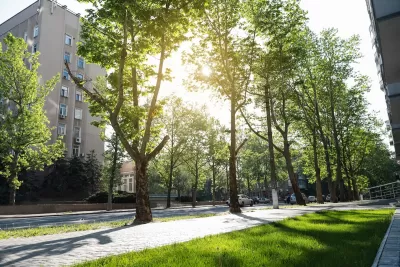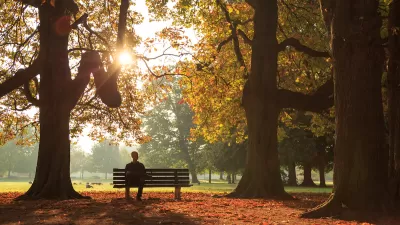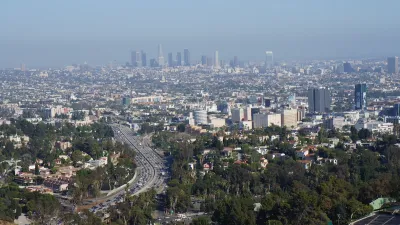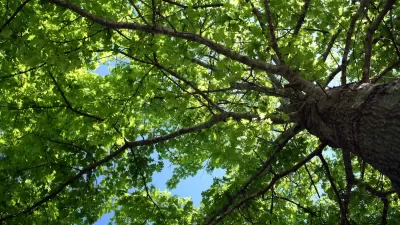Far from just providing shade and improving air quality, trees can also contribute to more resilient roads, lower energy costs, and reduced flood risk.

In a piece on Strong Towns, Emma Durand-Wood extols the many benefits of urban trees, which contribute to everything from cooler temperatures to cleaner air to higher property values.
Money talks. While the critical environmental benefits that trees provide (like capturing carbon, cleaning the air and supporting biodiversity) have tremendous and calculable value, advocating for trees on an environmental basis isn’t always effective.
To that end, Durand-Wood outlines some of the tangible, economic benefits of street trees. These include, surprisingly, longer lasting roads: “street trees prolong the life of road surfaces by keeping them cooler and reducing temperature fluctuations.” According to one study, the amount of shade on a street is directly correlated to the length of time needed between repaving treatments.
Another benefit: less flooding, since “A mature tree can intercept 30%-40% of rainfall before it even hits the ground.” Trees also create more comfortable and safe walking and biking conditions, provide shade at bus stops and in public spaces, and help reduce cooling bills by lowering surrounding air temperature.
Durand-Wood concludes, “Planting and maintaining street trees is an investment, but it’s one that pays for itself over and over again.” According to a USDA study, every dollar spent on planting and maintaining urban tree canopies yields between $1.37 to $3.09 in benefits.
FULL STORY: The Multitasking Marvel: How Street Trees Can Solve Many Municipal Problems

Planetizen Federal Action Tracker
A weekly monitor of how Trump’s orders and actions are impacting planners and planning in America.

Congressman Proposes Bill to Rename DC Metro “Trump Train”
The Make Autorail Great Again Act would withhold federal funding to the system until the Washington Metropolitan Area Transit Authority (WMATA), rebrands as the Washington Metropolitan Authority for Greater Access (WMAGA).

The Simple Legislative Tool Transforming Vacant Downtowns
In California, Michigan and Georgia, an easy win is bringing dollars — and delight — back to city centers.

The States Losing Rural Delivery Rooms at an Alarming Pace
In some states, as few as 9% of rural hospitals still deliver babies. As a result, rising pre-term births, no adequate pre-term care and "harrowing" close calls are a growing reality.

The Small South Asian Republic Going all in on EVs
Thanks to one simple policy change less than five years ago, 65% of new cars in this Himalayan country are now electric.

DC Backpedals on Bike Lane Protection, Swaps Barriers for Paint
Citing aesthetic concerns, the city is removing the concrete barriers and flexposts that once separated Arizona Avenue cyclists from motor vehicles.
Urban Design for Planners 1: Software Tools
This six-course series explores essential urban design concepts using open source software and equips planners with the tools they need to participate fully in the urban design process.
Planning for Universal Design
Learn the tools for implementing Universal Design in planning regulations.
Smith Gee Studio
City of Charlotte
City of Camden Redevelopment Agency
City of Astoria
Transportation Research & Education Center (TREC) at Portland State University
US High Speed Rail Association
City of Camden Redevelopment Agency
Municipality of Princeton (NJ)





























